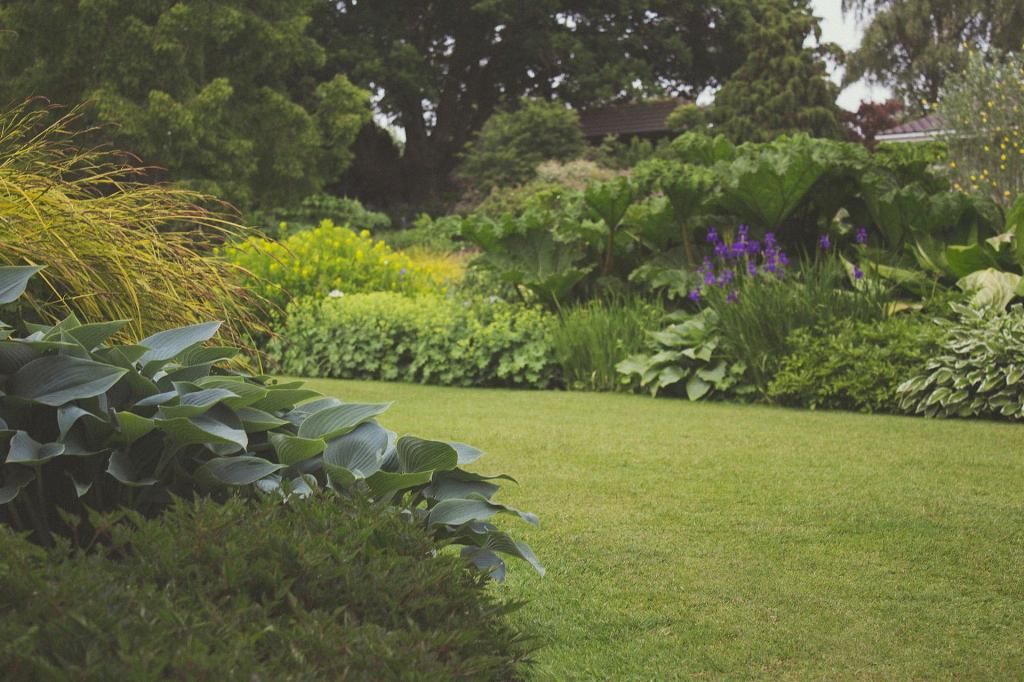If you’ve noticed irregular brown patches on your lawn, it might be a sign that you have grubs lurking beneath the surface. These pesky larvae feed on the grassroots, causing the affected areas to turn brown and die off, leaving behind unsightly patches that can ruin the overall appearance of your lawn.
One of the key indicators of grub infestation is the presence of loose or spongy turf in the affected areas. As grubs munch on the roots of your grass, they weaken the foundation, making the turf feel soft and spongy underfoot. So, if you notice any areas of your lawn that feel mushy or sink slightly when you walk on them, it’s a strong indication that grubs may be the culprits.
In addition to brown patches and spongy turf, another telltale sign of grub infestation is the presence of animals like skunks, raccoons, or birds digging up your lawn in search of a tasty grub meal. These critters are drawn to lawns infested with grubs because they are a good source of protein, so if you start seeing dug-up areas on your lawn, it’s a clear indicator that grubs may be present.
Furthermore, another way to determine if you have grubs in your lawn is by conducting a simple tug test. Grab a section of the affected turf and gently pull on it. If the grass easily lifts away from the soil, revealing severed roots, it’s a strong indication that grubs have been feeding on the grassroots below the surface.
Pay attention to the behavior of your lawn during periods of drought or excessive heat. Grubs are more active during these times as they seek out moisture from the grass roots, causing the affected areas to wilt and die off faster than the rest of your lawn. If you notice these symptoms, it’s likely that grubs are present.
Additionally, if you see adult beetles hovering over your lawn during the warmer months, it could be a warning sign of a potential grub infestation. Adult beetles lay eggs in the soil, which hatch into grubs that feed on your grassroots. So, keeping an eye out for these flying pests can help you detect grubs before they cause significant damage to your lawn.
Another way to check for grubs is by conducting a soil inspection. Dig up a small section of turf in the affected area and examine the soil for any white, C-shaped grubs. These are the larvae of beetles that feed on grassroots, causing damage to your lawn. Finding these grubs confirms the presence of a grub infestation.
Consider using a soap flush test to determine if you have grubs in your lawn. Mix a tablespoon of dish soap with a gallon of water and pour the solution over a small section of your lawn. The soap irritates the grubs, causing them to surface. If you notice several grubs emerging from the soil, it’s a clear indication that your lawn is infested.
Keep an eye out for signs of wilting or yellowing grass in the affected areas of your lawn. Grubs disrupt the nutrient uptake of your grass, causing it to wilt and turn yellow as they feed on the roots. If you notice these symptoms, it’s time to investigate further for potential grub infestation.
Stay vigilant for increased pest activity in your lawn, such as ants, beetles, or other insects that are attracted to the presence of grubs. These pests may be indicators of an underlying grub infestation, as they are drawn to lawns with weakened grass roots that are easy targets for their predatory behavior.
Consider the overall health of your lawn. If you notice a decline in the vigor and density of your grass, along with the presence of brown patches and spongy turf, it’s a strong indication that grubs may be wreaking havoc beneath the surface. Taking proactive measures to address the issue can help restore the health and beauty of your lawn.
In conclusion, being able to identify the signs of grub infestation in your lawn is crucial for maintaining a healthy and vibrant outdoor space. By keeping an eye out for irregular brown patches, spongy turf, animal activity, wilting grass, adult beetles, and conducting soil tests, you can effectively detect and address grub infestations before they cause significant damage to your lawn.

